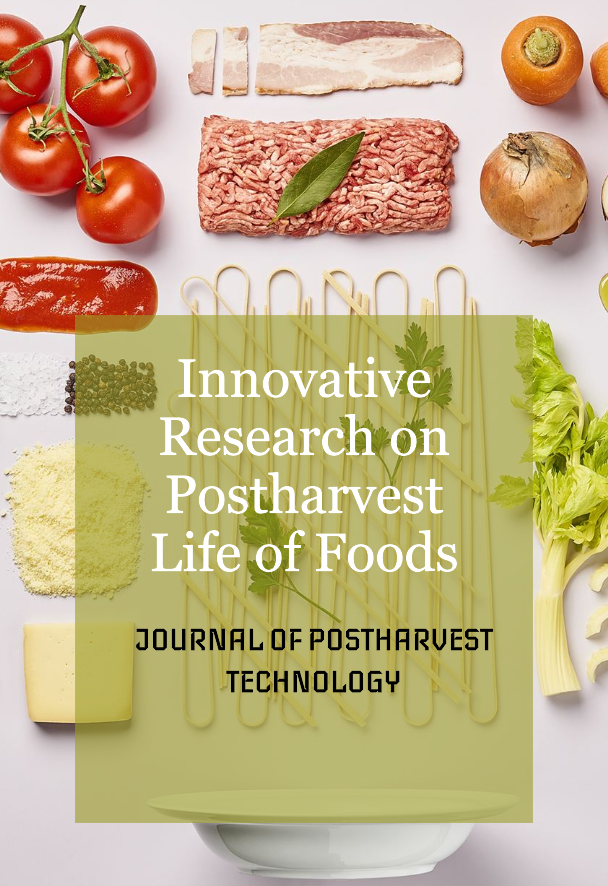Quality measurements affected by frozen storage of fishes
Keywords:
Freezing, fish, water holding capacity, color, texture, crystallizationAbstract
Fish is a very perishable food and therefore several storage strategies need to be employed to increase its shelf-life, guaranteeing its safety and quality from catch to consumption. Despite the advances in modern fish storage technologies, chilling and freezing are still the most common preservation methods used onboard. The present review aims to summarize strategies to increase the shelf-life of fresh (chilled) and frozen fish. Although there are other factors that influence the fish shelf-life, such as the fish species and the stress suffered during catch, storage time and temperature and the amount of ice are some of the most important. In addition, the way that fish is stored (whole, fillet, or gutted) also contributes to the final quality of the product. A major problem with food storage, whether refrigeration or freezing, is quality degradation. Major physical and chemical attributes affected in fish are color, texture, enzymatic activity, lipid oxidation, and ice crystal structural damage. Storage time, whether that is short or long term, affects these quality attributes in different ways.
References
Abdel-Kader, Z.M. 1996. Lipid oxidation in chicken as affected by cooking and frozen storage. Nahrung, 40(1):21-24
Alizadeh, E., Chapleau, N., De Lamballerie, M. and Leball, A. 2007. Effects of Freezing and Thawing Processes on the Quality of Atlantic salmon (Salmo Salar) Fillets. Journal of Food Science, 72(5):279-284
Barroso, M., Careche, M. and Borderias, A.J. 1998. Quality control of frozen fish using rheological techniques. Trends in Food Science & Technology, 9:223-229
Chevalier, D., Le Bail, A. and Ghoul, M. 2000. Freezing and ice crystals formed in a cylindrical food model: part I. Freezing at atmospheric pressure. Journal of Food Engineering, 46: 277-285
Farouk, M.M., Wieliczko, K.J. and Merts, I. 2003. Ultra-fast freezing and low storage temperatures are not necessary to maintain the functional properties of manufacturing beef. Meat Science, 66:171-179
Hartel, R.W. 2001. Crystallization in Foods. Food Engineering Series, 1-326
Heldman, D.R. and Hartel, R.W. 1998. Freezing and Frozen-Food Storage. In: Heldman, D.R., editor. Principles of Food Processing. Gaithersburg, MD: Aspen Publishers, Inc. 131-132
Listrat, A., Lebret, B., Louveau, I., Astruc, I., Bonnet, M., Lefaucheur, L., Picard, B. and Burgeon, J. 2016. How Muscle Structure and Composition Influence Meat and Flesh Quality. The Scientific World Journal. Article ID 3182746, 1-14
Offer, G. and Knight, P. 1988. The Structural Basis of Water-Holding in Meat Part 1: General Principles and Water Uptake in Meat Processing. In: Lawrie, R., editor. Developments in Meat Science-4. New York, NY: Elsevier Science Publishing Co. 63-172
Ottestad, S., Enersen, G. and Wold, J.P. 2011. Effect of Freezing Temperature on the Color of Frozen Salmon. Journal of Food Science, 76(7):S423-S427.
Petzold, G. and Aguilera, J.M. 2009. Ice Morphology: Fundamentals and Technological Applications in Foods. Food Biophysics, 4:378-396
Pomeranz, Y. and Meloan, C.E. 1987. Measurement of Color. In: Food Analysis Theory and Practice. 2nd ed. New York: Van Nostrand Reinhold Company. 85-96
Santos-Yap, E.E.M. 1996. Fish and Seafood. In: Jeremiah, L.E. Freezing Effects on Food Quality. New York: Marcel Dekker Inc. 109-133
Shenouda, S. 1980. Theories of protein denaturation during frozen storage of fish flesh. Advances in Food Research, 26:275- 311
Singh, R.P. and Heldman, D.R. 2001. Introduction of Food Engineering, 3rd ed.
Strasburg, G., Xiong, Y.L. and Chiang, W. 2008. Physiology and Chemistry of Edible Muscle Tissues Food Chemistry 4th ed. Boca Raton, FL: CRC Press. 958-959.
Syamaladevi, R.M., Manahiloh, K.N., Muhunthan, B. and Sablani, S.S. 2012. Understanding the Influence of State/Phase Transitions on Ice Recrystallization in Atlantic Salmon (Salmo salar) During Frozen Storage. Food Biophysics. 7:57- 71.
Tolstorebrov, I., Eikevik T.M. and Bantle, M. 2016. Effect of low and ultra-low temperature applications during freezing and frozen storage on quality parameters for fish. Int J Refrig, 63:37–47
Woinet, B., Andrieu, J., Laurent, M. and Win, S.G. 1998. Experimental and Theoretical Study of Model Food Freezing. Part II. Characterization and Modeling of the Ice Crystal Size. Journal of Food Engineering, 35:395-407
Yamada, K. 1967. Occurrence and origin of TMAO in fishes and marine invertebrates. Bulletin of Japanese Society for the Science of Fish, 33(6):591-603
Zhu, S., Ramaswamy, H.S. and Simpson, B.K. 2004. Effect of high-pressure versus conventional thawing on color, drip loss and texture of Atlantic salmon by different methods. Lebensm.-Wiss, u,-Technol, 37:291-299




